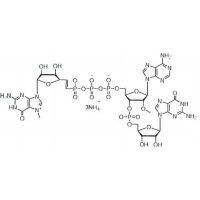
HotVent exo- DNA Polymerase
2022-07-21
Vaccinia Capping Enzyme
2022-09-09Ribonuclease R, RNase R
RNase R
Product Number: RR01
Shipping and Storage
Store at -20°C to avoid repeated freeze-thaw cycles.
Component
| Component | RR01-500U | RR01-2500U | RR01-5KU |
| RNase R(20U/μL) | 25μL | 125μL | 250μL |
| 10× RNase R Buffer | 1mL | 5mL | 5ml×2 |
| RNase Free Water | 1mL | 5mL | 5ml×2 |
Description
Ribonuclease R (RNase R) originates from the E. coli RNR superfamily and is a magnesium dependent 3 ‘-5’ exonuclease that can gradually cleave RNA into dinucleotides and trinucleotides from the 3 ‘-5’ direction. RNase R can digest almost all linear RNA, but it is not easy to digest circular RNA, lasso structure RNA, and short double stranded RNA molecules with less than 7 nucleotides protruding from the 3 ‘end.
RNase R is commonly used in gene expression and variable splicing studies, and can digest linear RNA to enrich circular RNA or lasso structure RNA.
Application
- Gene expression research;
- Variable shear research;
- Enriching circRNA from biological samples;
- Identify intronic lasso structure RNA;
- Identify exon circRNA.
Storage Buffer
50mM Tris-HCl, 100mM NaCl, 0.1mM EDTA, 1mM DTT, 0.1% Triton X-100 and 50% Glycerol (pH 7.5 at 25℃).
Definition of active units
The enzyme required to convert 1µg poly (A) into acid soluble nucleotides in 10 minutes under standard reaction conditions at 37℃ is defined as 1U.


